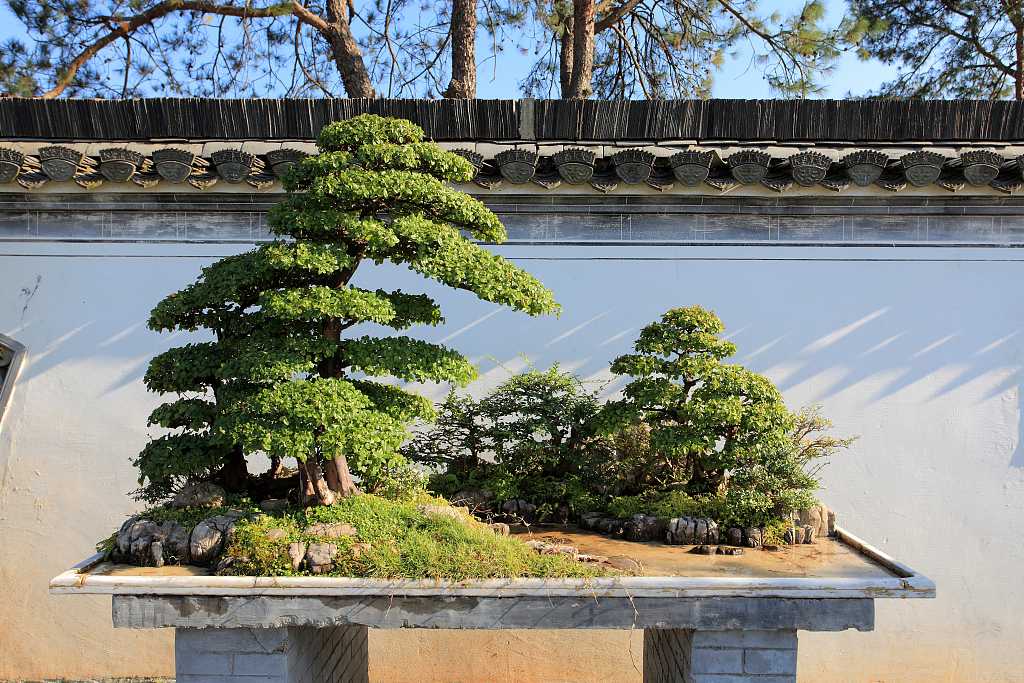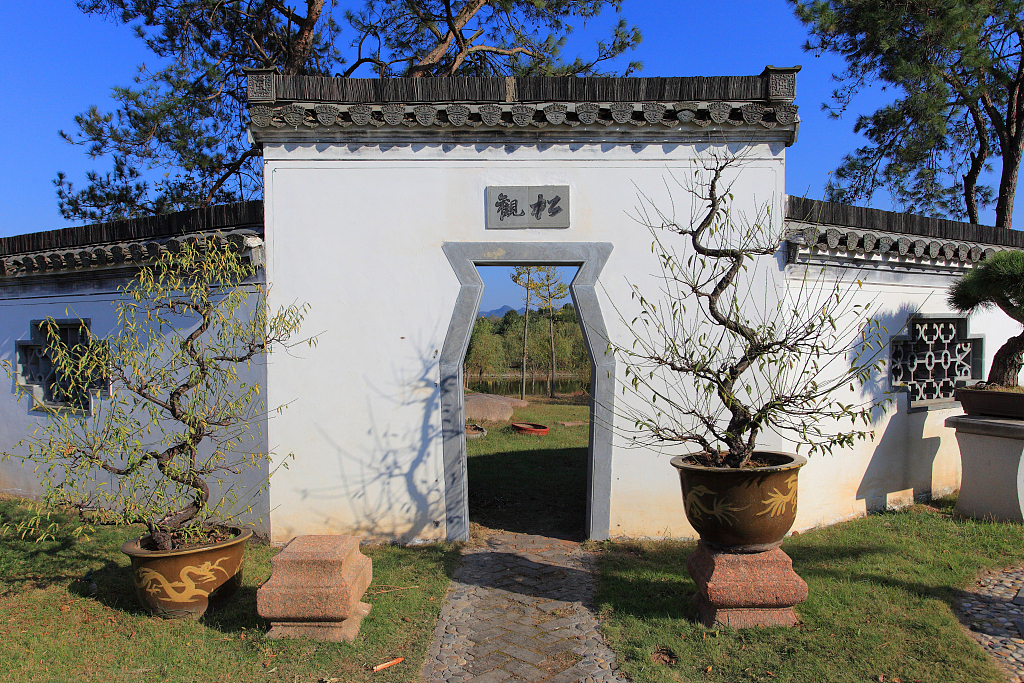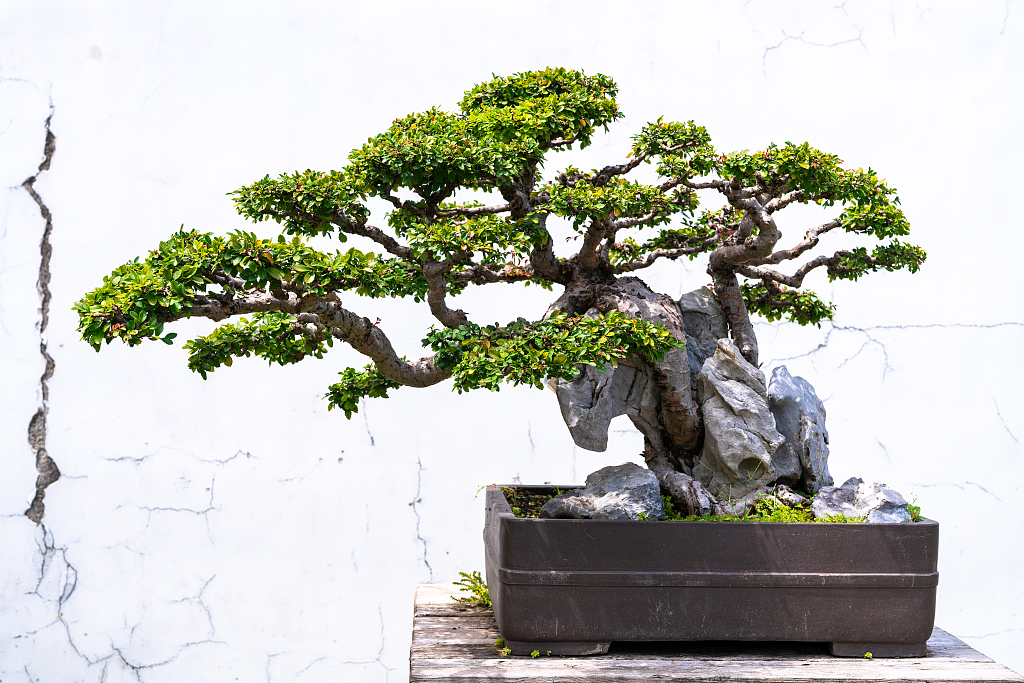
Bonsai plants have been a part of China for thousands of years. Carved patterns on unearthed pottery fragments even indicate the earliest bonsai appeared 7,000 years ago in China. Hui-style bonsai plants, originating in Anhui Province in eastern China, are one of the five famous bonsai groups in the country.

Hui-style bonsai. /VCG Photo
The bonsai plants are grown in fields or open spaces, trimmed and cultivated into desired shapes before being moved into pots. Many plants can be used to make bonsai. Plum trees, cypress, Huangshan pines, and yellow woods are the most common kind. In addition to the marriage of stones and moss, you can create a separate ecosystem in the jungle of modern buildings.

Hui-style bonsai. /VCG Photo
Now that daily access to at least a small piece of nature is possible, well-versed craftsmen push it a step further by styling the plants into shapes that bear auspicious significance.
Take dragon shapes for instance, with the typical S-shape of the trunk characterizing a wandering dragon, which represents good luck and power in China. To make it more lifelike, small branches are trimmed to grow along with the truck, mimicking stretched dragon claws.

Hui-style bonsai. /VCG Photo
Inspired by nature, integrated with human culture, bonsai plants serve as one of the most successful cases of harmony between humans and nature.
From the wetlands along the east coast to the dense rainforests hidden in the southwest, China boasts an array of plant species. In this series, we will go on a tour to learn about some of the most representative flora in different provinces and see how they live in harmony with the local geography and climate.
(Cover image via VCG.)
(If you want to contribute and have specific expertise, please contact us at nature@cgtn.com.)

Copyright © 2018 CGTN. Beijing ICP prepared NO.16065310-3
Copyright © 2018 CGTN. Beijing ICP prepared NO.16065310-3